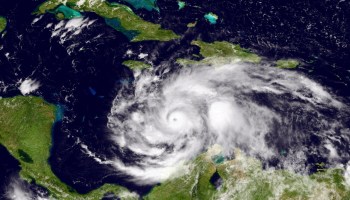This just in. Gov. Nathan Deal has issued a state of emergency for the following counties in Georgia ahead of Hurricane Matthew:
Brantley, Bryan, Bulloch, Camden, Charlton, Chatham, Effingham, Evans, Glynn, Liberty, Long, McIntosh and Wayne counties.
A mandatory evacuation has also been given to Tybee Island.
According to the National Hurricane Center, Matthew is a category 4 storm with maximum sustained winds near 145 mph (230kph).
President Obama also chimed in today in a press conference urging residents to take evacuation orders seriously:
“Even if you don’t get the full force of the hurricane we are still going to be seeing tropical force winds, the potential for storm surge, and all of that could have a devastating effect…So everybody needs to be paying attention and following the instructions of your local officials, and if you get an evacuation order just remember that you can always rebuild, you can always repair property, you cannot restore a life if it is lost.”
So far 11 deaths have been confirmed as a result of Matthew.
Nearly 500 thousand people have been urged to evacuate the Florida coast and if it keeps going, this could be the first major hurricane to hit the state of Georgia in over a century.
Governor Declares State Of Emergency Ahead Of Hurricane Matthew was originally published on majicatl.com















